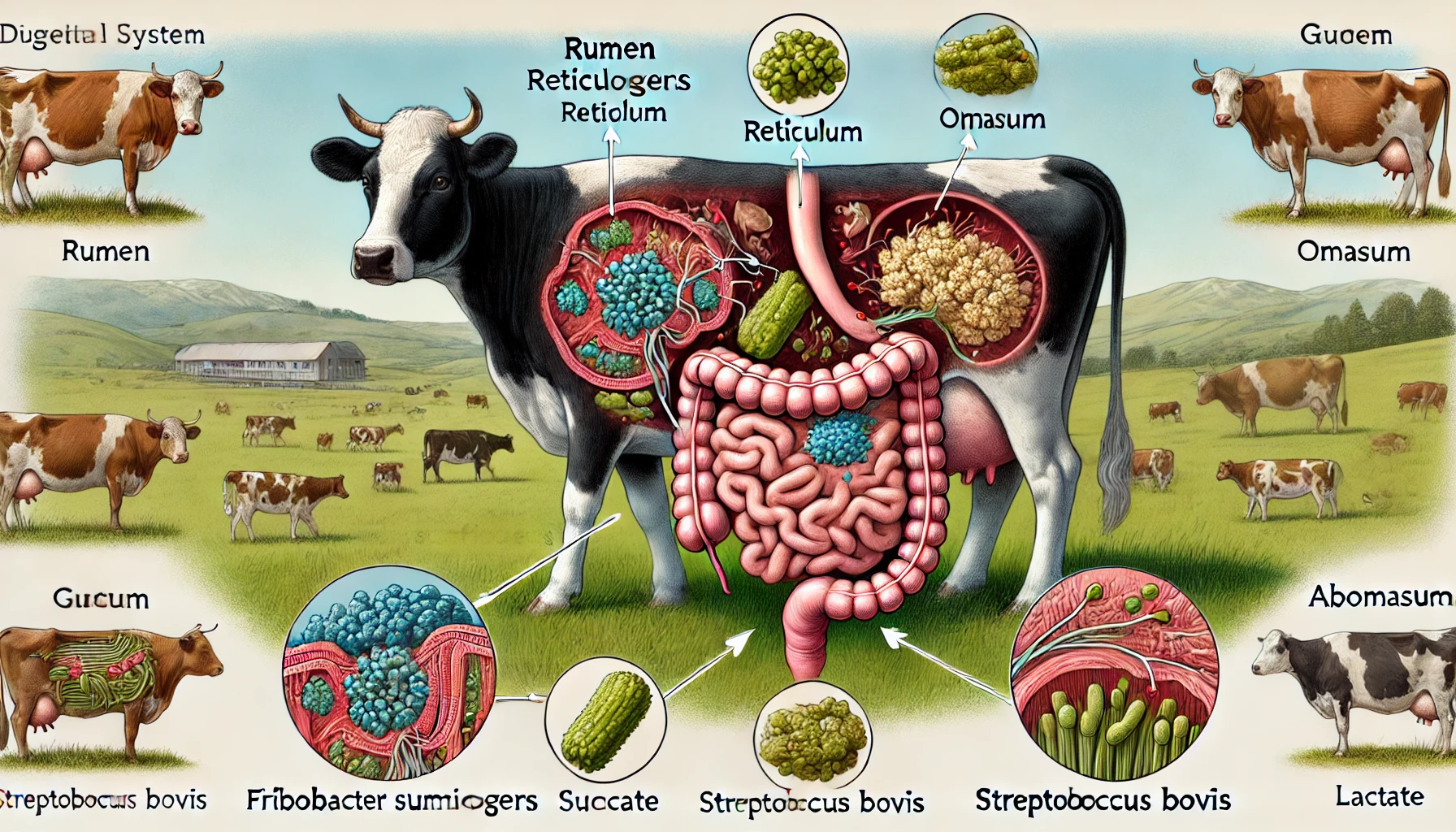Carbohydrates are an important source of energy for humans and animals, and while ruminants do not synthesize enzymes to break down fiber, the microbes that live in the rumen break down fiber and non-fiber for energy. The metabolites from this process are used as an energy source for ruminants, but excessive nonfiber intake can increase rumen acidity and lead to acute rumen acidosis.
Carbohydrates are an essential energy source for animals, including humans, to survive. Carbohydrates are divided into fiber and non-fiber. Humans use enzymes synthesized in the body to break down non-fiber, such as the starch in grains, into glucose, which is absorbed in the small intestine and used for energy. Humans, on the other hand, cannot synthesize enzymes that break down fiber, such as cellulose, the main component of grasses and vegetables, into glucose, and therefore cannot utilize fiber in the small intestine. Despite these limitations, fiber plays an important role in the human digestive system. For example, as it moves through the digestive tract, fiber promotes intestinal peristalsis, prevents constipation, and helps balance the gut microbiome. This means that although fiber is not directly used as an energy source, it is essential for maintaining a healthy digestive system.
Ruminants such as cows, sheep, and deer are also unable to synthesize the enzyme that breaks down fiber, but they live on both non-fiber and fiber for energy. These ruminants have a unique digestive system that allows them to do this. The ruminant stomach is divided into four sections, each with a specific function. The first stomach, the rumen, plays an important role in this digestive process. The rumen is home to several types of microorganisms, which produce the enzymes needed to break down fiber and non-fiber.

The rumen of ruminants is oxygen-free, and the rumen microbes that thrive in this environment have a variety of physiological characteristics. Among them, Fibrobacter succinogenes (F) is a typical microbe that degrades fiber. In plants, cellulose is intricately intertwined with other materials that surround it, and F’s enzyme complex breaks down this structure, exposing the cellulose and breaking it down into glucose. F metabolizes this glucose within its own cells, using it as an energy source to sustain its survival and grow its population. This metabolism produces acetic acid, succinic acid, and other metabolites, which are excreted outside the cell. Acetic acid produced by microbes in the rumen is absorbed directly into the ruminant’s cells, where it is primarily used to generate energy for survival and to synthesize body fat. Meanwhile, succinic acid in the rumen is quickly used up as an energy source for other microbes that metabolize propionic acid. The resulting propionic acid is used as a key ingredient in the metabolic process by which ruminants synthesize glucose in the liver.
The rumen is also home to Streptococcus bovis (S), which breaks down non-fiber starch. This microbe breaks down the starch ingested by the ruminant into glucose, which it then metabolizes in its own cells to provide energy for its own needs. The metabolites that S excretes from its cell depend on the acidity of its own cell. If the hydrogen ion concentration index (pH), which indicates acidity, is neutral at around 7.0 and the growth rate is slow, acetic acid and ethanol are discharged as metabolites. On the other hand, when the pH drops below 6.0 due to increased acidity or when the amount of starch is sufficient and the growth rate is high, lactic acid is produced as a metabolite. In the rumen, lactic acid is absorbed directly into the ruminant’s cells, where it is used to generate energy for the ruminant, or as an energy source for other microorganisms that produce acetic or propionic acid as metabolites.
However, there are times when excessive S growth can be detrimental to ruminants. When ruminants consume excessive amounts of non-fiber in a short period of time, the population of S increases dramatically and excessive amounts of lactic acid are released, increasing the acidity of the rumen. As a result, the growth of lactic acid-producing microorganisms such as Lactobacillus luminis (L), which thrives in an acidic environment and always produces lactic acid as a metabolite, increases and begins to produce large amounts of lactic acid. Fibrotic microorganisms, including F, prefer to maintain a neutral pH inside their cells, so if the pH outside their cells decreases due to an increase in lactic acid concentration, their growth decreases as they use energy to maintain homeostasis inside their cells. If the pH outside their cells drops below 5.8, they run out of energy, stop growing, and enter a phase of death. In contrast, S and L are relatively acid tolerant and can lower the pH inside their cells in response to a drop in the pH outside their cells to around 5.5, so they use very little of their energy to maintain the pH inside their cells and continue to grow. However, if the pH outside of their cells drops further below that level, S will stop growing and enter a phase of death, and lactic acid-producing microbes, including the more acidic L, will dominate the rumen microbiome. This results in acute rumen acidosis, where the pH of the rumen falls below 5.0. This situation poses a serious threat to ruminant health and requires proper management and prevention.
 I’m a blog writer. I want to write articles that touch people’s hearts. I love Coca-Cola, coffee, reading and traveling. I hope you find happiness through my writing.
I’m a blog writer. I want to write articles that touch people’s hearts. I love Coca-Cola, coffee, reading and traveling. I hope you find happiness through my writing.